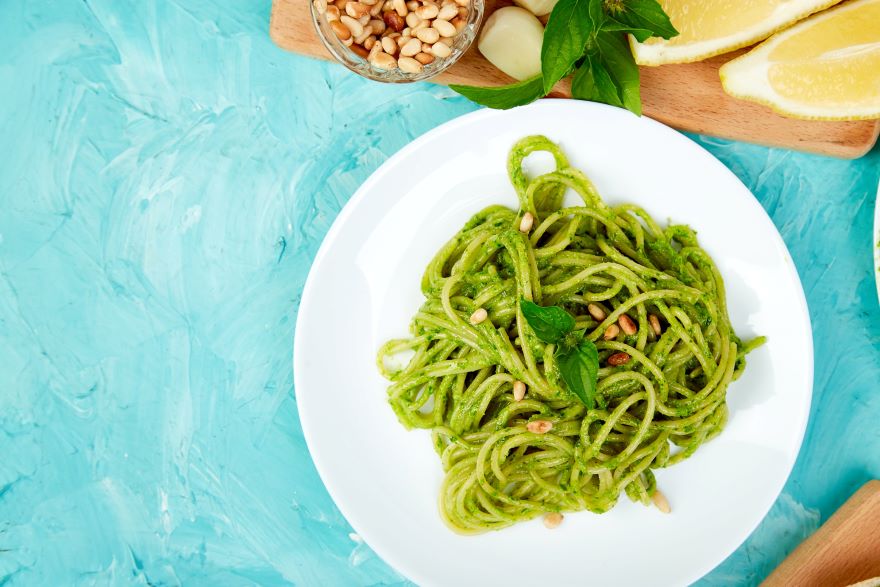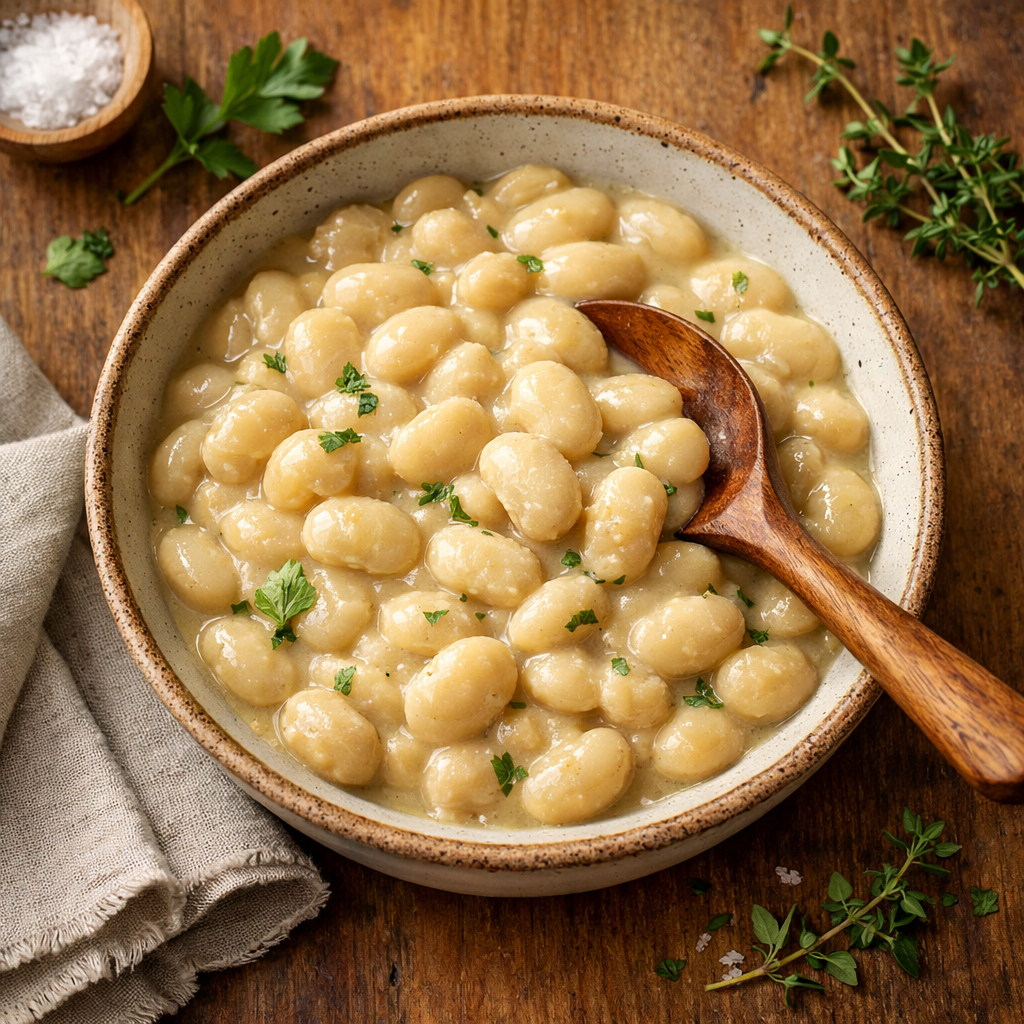The plant-based pasta market has experienced remarkable growth, with alternatives like edamame pasta leading an 87% increase in sales over the past two years. This green alternative to traditional wheat noodles offers substantial nutritional advantages while providing a satisfying culinary experience. Made from ground edamame beans (young soybeans), this pasta alternative delivers complete protein, high fiber content, and essential micronutrients that support various health goals.
Complete Nutritional Profile of Edamame Pasta

Macronutrient Composition
A standard 2-ounce dry serving of edamame pasta (approximately 140 grams when cooked) contains 24 grams of complete protein, compared to just 8 grams in traditional wheat pasta. This significant protein advantage comes with a complete amino acid profile, placing it in the same category as animal proteins for nutritional quality.
The fiber content is equally impressive at 13 grams per serving, representing 52% of the daily recommended value. Traditional wheat pasta provides only 2.5 grams of fiber per equivalent serving. The total calorie count reaches 180 per serving, with 20 grams of carbohydrates and 3 grams of fat, creating a macronutrient profile of approximately 53% protein, 44% carbohydrates, and 15% fat.
Essential Micronutrients
Each serving delivers folate at 120% of the daily value, making it exceptionally valuable for pregnant women and those needing increased folate intake. Vitamin K content reaches 40% of daily needs, while iron provides 25% of daily requirements. Magnesium contributes 20% of daily needs, and potassium adds 27% of the recommended daily intake.
The bioavailability of these nutrients remains high despite processing, as the grinding and pasta-making process breaks down cell walls, making nutrients more accessible for absorption while maintaining the integrity of key compounds.
Glycemic Impact
This pasta alternative demonstrates a glycemic index of 30-35, significantly lower than traditional wheat pasta which typically ranges from 50-60. This lower glycemic response helps maintain stable blood sugar levels and provides sustained energy release without the typical post-meal blood sugar spikes associated with high-glycemic foods.
Evidence-Based Health Benefits
Cardiovascular Health
Clinical research demonstrates substantial cardiovascular benefits from soy protein consumption. An analysis of 38 clinical trials showed that replacing animal protein with soy protein significantly decreased LDL cholesterol levels in participants. The mechanism involves both the soy protein content and the impressive fiber levels working together to support heart health.
The 13 grams of fiber per serving helps bind cholesterol in the digestive system, preventing its absorption and supporting healthy cholesterol levels. This combination of soy protein and high fiber creates a powerful cardiovascular protection profile that extends beyond what either component could provide alone.
Blood Sugar Management
The diabetes management potential extends far beyond the low glycemic index. Like other legumes, this pasta excels at maintaining steady blood sugar levels through its unique combination of high fiber, protein, and complex carbohydrates. Research on soy isoflavones shows potential for improving insulin sensitivity, particularly in postmenopausal women.
One study found that administering soy isoflavones to postmenopausal women significantly reduced both blood sugar levels and insulin within a six-month period. The sustained-release energy profile created by the macronutrient combination helps maintain stable energy levels without the typical afternoon crashes associated with high-glycemic foods.
Weight Management Support
The weight management benefits operate through multiple mechanisms centered on enhanced satiety. The combination of 24 grams of protein and 13 grams of fiber creates a powerful satiety effect that can extend satisfaction for 4-5 hours compared to 2-3 hours with regular pasta. This extended satisfaction translates to reduced snacking and easier calorie management throughout the day.
Research indicates that protein-rich foods increase thermogenesis and help maintain muscle mass during weight loss efforts. The high protein content supports these metabolic benefits while the fiber contributes to feelings of fullness and digestive health.
Hormonal Health
Edamame contains isoflavones, plant compounds with estrogen-like effects that may provide hormonal health benefits. These compounds show potential for reducing menopausal symptoms including hot flashes, night sweats, irregular periods, and mood swings. Studies indicate that isoflavones can have an effect on the body similar to estrogen, potentially helping to balance hormonal fluctuations. Individual responses vary significantly, and the moderate isoflavone levels in pasta provide a gentler introduction to these compounds compared to concentrated supplements. This makes it a practical way to incorporate potential hormonal benefits into regular dietary patterns.
Comprehensive Edamame Pasta Cooking Guide
Basic Preparation Method
Successful preparation requires attention to timing and technique. Use a 4:1 water-to-pasta ratio in a large pot, adding salt only after the water reaches a rolling boil. The optimal cooking time ranges from 5-7 minutes, though testing for doneness should begin at the 5-minute mark since this pasta can transition from perfectly cooked to overcooked within a single minute.
The texture goal is firm but not crunchy, with a slight bite that maintains structural integrity when mixed with sauces. Unlike wheat pasta, edamame varieties require careful monitoring throughout the cooking process to achieve optimal results.
Texture and Flavor Profile
The natural flavor profile is subtly nutty and earthy with a hint of sweetness that allows it to complement a wide range of flavors and cooking styles. The texture is slightly grainy and more substantial than wheat pasta, providing a satisfying mouthfeel that works particularly well with chunky sauces and roasted vegetables.
This unique texture becomes an advantage rather than a limitation when approached with appropriate expectations. The slightly firmer bite provides textural contrast that wheat pasta cannot match, making it particularly suitable for dishes where pasta serves as a substantial base rather than merely a vehicle for sauce.
Sauce Pairing and Enhancement
Light, oil-based sauces work exceptionally well with the natural nutty flavors. Classic preparations like aglio e olio, pesto, and Asian-inspired sesame-based sauces complement the pasta’s inherent characteristics beautifully. Mediterranean-style preparations with olive oil, garlic, herbs, and vegetables create balanced, flavorful dishes that highlight rather than mask the pasta’s unique qualities.
The pasta absorbs sauce more readily than wheat varieties, requiring approximately 25% more sauce than traditional recipes call for. This increased absorption creates more flavorful dishes but requires adjustment in sauce preparation and ratios.
Storage and Reheating
Cooked pasta maintains excellent texture when properly stored in the refrigerator for up to 5 days. For optimal reheating, add a splash of water or broth to prevent drying and restore moisture. The pasta reheats better than most alternatives, making it excellent for meal preparation and advanced cooking.
Store sauce separately when meal prepping to maintain optimal texture and prevent the pasta from becoming soggy. The stable texture after reheating makes it practical for large-batch cooking and weekly meal preparation strategies.
Comparative Analysis: Pasta Alternatives
Nutritional Superiority
When compared to traditional wheat pasta, the advantages become immediately apparent. The protein content triples from 8 grams to 24 grams per serving, while fiber increases more than five-fold from 2.5 grams to 13 grams. These improvements come with fewer total calories and significantly lower glycemic impact.
o give yourself a gourmet option that balances texture, taste and nutrition, Seapoint Farms Organic Edamame Spaghetti is a standout. It hits high protein and fiber, still cooks nicely, and has excellent reviews among the edamame pastas.

SEAPOINT FARMS Organic Edamame Spaghetti Pasta, 7.05 OZ
- A Heart-Healthy, Low-Fat, High-Protein Food
- Made With Nothing But Organic Soybeans
- One 7.05 Ounce Package Of Edamame Spaghetti
- See Nutrition Panel For Allergen Information
Compared to other legume pastas, edamame pasta performs competitively while offering unique advantages. Chickpea pasta provides similar protein levels at 25 grams per serving but slightly less fiber at 12 grams. Lentil pasta offers 21 grams of protein and 11 grams of fiber, making this green alternative competitive across all major nutritional categories.
The complete amino acid profile sets it apart from many plant-based alternatives, providing all essential amino acids in proper ratios for optimal protein utilization. This completeness eliminates the need for protein combining within the same meal, simplifying nutritional planning.
If you’re looking for a top-tier edamame pasta that lives up to the nutritional profile above, Explore Cuisine Organic Edamame Spaghetti is one of the best. It’s USDA organic, non-GMO, gluten-free and delivers very close to those 24 g protein / 13 g fiber numbers per serving.

Explore Cuisine Organic Edamame Spaghetti – 8 oz – Easy-to-Make Pasta – High in Plant-Based Protein – Non-GMO, Gluten Free, Vegan, Kosher – 4 Servings
- PLANT PROTEIN. MADE SIMPLE. – Explore Cuisine is easy-to-make food that’s good and good for you. It’s high protein. High fiber. And it’s organic. We know that simple changes can make a big impact.
- CLEAN, SIMPLE INGREDIENTS – All Explore Cuisine pastas are USDA Certified Organic, non-GMO, gluten free, vegan & kosher. Never any added flavorings, binders or gums.
- SUPER TASTY NUTRITION – Our Organic Edamame Spaghetti is nutrient dense & low in carbohydrates compared to traditional pasta. Plus, each 3.5-oz serving contains 42g of protein and 23g of fiber.
- EASY TO MAKE – These gluten-free noodles cook just like traditional pasta and are ready in minutes. Making a quick, tasty meal for the entire family has never been so simple!
Environmental Impact
Soybean cultivation demonstrates significant environmental advantages over traditional wheat production. Water requirements are 60% lower than wheat, while the nitrogen-fixing properties of soybeans actually improve soil health rather than depleting it. The carbon footprint per gram of protein is approximately 60% lower than animal protein sources.
This sustainability profile makes it an environmentally conscious choice that aligns with regenerative agriculture principles. The crop rotation benefits and soil improvement capabilities contribute to long-term agricultural sustainability while providing superior nutrition.
Dietary Considerations and Safety
Gluten-Free Status and Cross-Contamination
Edamame is naturally gluten-free according to the Celiac Disease Foundation, making it suitable for those with celiac disease and gluten sensitivities. However, cross-contamination during processing remains a consideration for highly sensitive individuals. Choose brands that explicitly state gluten-free certification and manufacture in dedicated gluten-free facilities for maximum safety.
The naturally gluten-free nature makes it an excellent option for those following gluten-free diets for medical or personal reasons, providing substantial nutritional advantages over many gluten-free pasta alternatives that rely primarily on refined starches.
Allergy and Sensitivity Considerations
For those with soy allergies, this pasta is contraindicated. However, some individuals who experience issues with other soy products may tolerate it better due to the processing method and reduced concentration of certain problematic compounds. Individual tolerance varies significantly, making personal testing important.
People with inflammatory bowel disease or FODMAP sensitivities should exercise caution, as edamame contains moderate FODMAP levels. While tolerated by some people with irritable bowel syndrome, it might cause digestive discomfort in others. Starting with smaller portions of 1-2 ounces dry can help assess individual tolerance levels.
Medication Interactions
The vitamin K content at 40% of daily needs requires consideration for individuals taking blood-thinning medications such as warfarin. Consistent consumption patterns are important for maintaining stable medication effectiveness, and healthcare providers should be consulted before making it a regular dietary component.
The isoflavone content, while providing potential benefits, requires consideration for individuals with hormone-sensitive conditions. The moderate levels in pasta are generally well-tolerated compared to concentrated supplements, but individual medical circumstances vary significantly.
Smart Shopping and Storage Guide
Quality Assessment and Brand Selection
Quality indicators include:
- Minimal ingredient lists (ideally just edamame flour)
- Organic certification when available
- Consistent cooking performance across batches
- No unnecessary additives or fillers
Based on extensive testing for texture, flavor, and nutritional consistency, Seapoint Farms, The Only Bean, and Explore Cuisine consistently deliver superior results. These brands demonstrate reliable cooking characteristics and maintain quality standards across production batches.
For those who want edamame pasta made with minimal ingredients but maximum quality, The Only Bean’s Organic Edamame Spaghetti Pasta is luxurious. It uses only organic edamame beans—no fillers or gums—and is certified USDA organic, non-GMO, gluten-free. A premium pick.

The Only Bean – Organic Edamame Spaghetti Pasta – High Protein, Keto Friendly, Gluten-Free, Vegan, Non-GMO, Kosher, Low Carb, Plant-Based Bean Noodles – 8 oz (1 Pack)
- PASTA FOR EVERY LIFESTYLE: Our pasta is USDA organic certified, non-GMO, gluten-free, keto friendly, low carb, grain-free, kosher, vegan, vegetarian, zero cholesterol, low sodium, and low-GI (for diabetes / diabetics, celiac). Explore the possibilities!
- HIGH PROTEIN & FIBER: Pasta that’s actually HEALTHY for you! Packed with over 40 grams of complete plant-based protein and 19 grams of fiber (per 3.5 ounce serving) for stronger muscles and healthier digestion
- LOW-CARB SUPERCHARGED PASTA: With only 9 grams of net carbs (per 2 oz serving), you can rediscover cuisines that you thought were out of reach!
- ONE INGREDIENT SUPERFOOD: Each type of pasta is made with ONE ingredient – Edamame, Soybeans, or Black Soybeans for sustained plant-based power to carry you throughout the day
Storage Optimization
Proper storage significantly extends the 12-18 month shelf life of unopened packages. Store in airtight containers in cool, dark locations away from temperature fluctuations. Once opened, transfer contents to glass containers with tight-fitting lids to maintain freshness for up to 6 months.
Avoid storing near heat sources or areas with temperature variations, as the natural oils in edamame can become rancid when exposed to heat, light, or air over extended periods. Proper storage maintains both flavor and nutritional integrity throughout the recommended storage period.
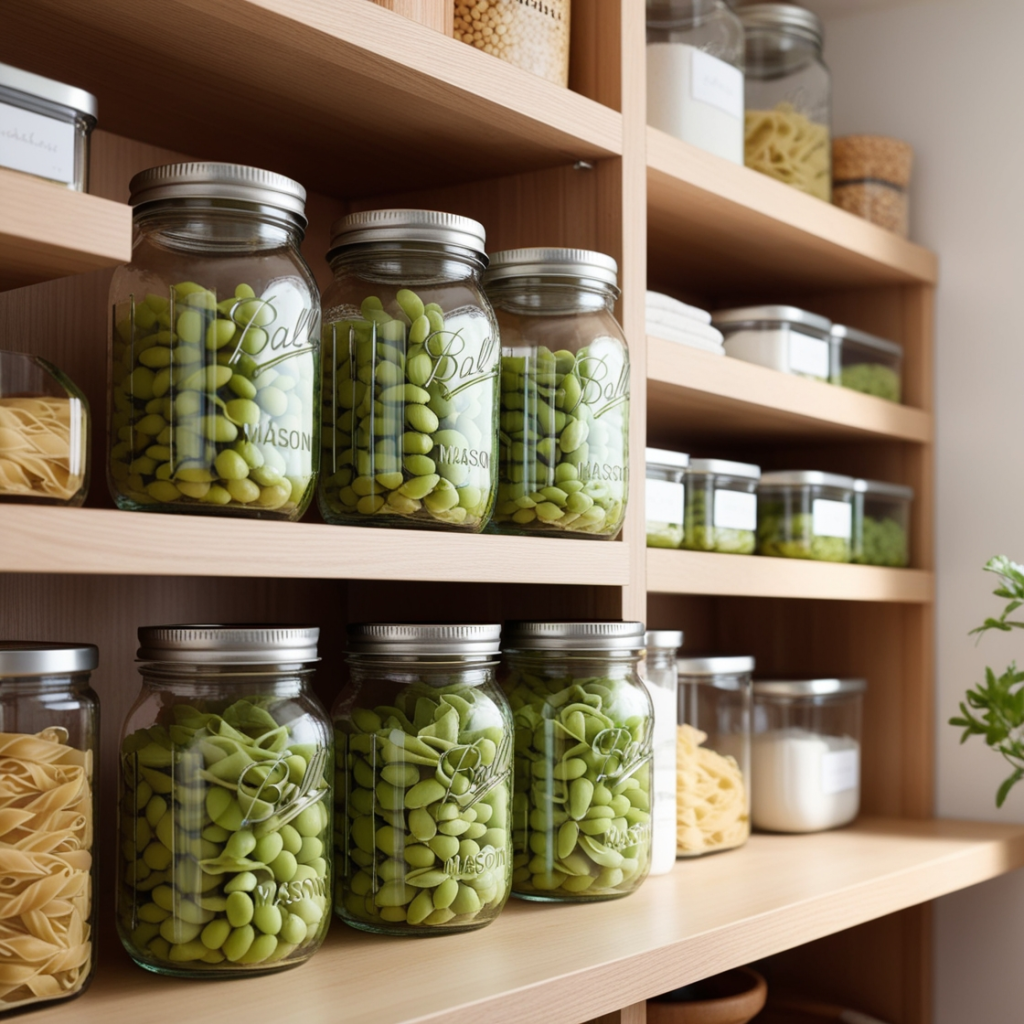
Purchasing Strategy and Cost Considerations
The price premium typically runs 2.5-3 times higher than conventional wheat pasta, but effective portion sizes are 25-30% smaller due to higher protein content and increased satiety. This partially offsets the higher per-unit cost when calculating actual cost per serving.
Availability includes:
- Health food sections of major grocery stores
- Specialty natural food retailers
- Online platforms with bulk purchase discounts
- Warehouse stores with occasional larger sizes at better per-unit prices
Implementation Strategies
Gradual Integration Approach
Successful adoption typically involves gradual integration rather than complete substitution. Starting by replacing one pasta meal per week allows palate and cooking technique adaptation while preventing dietary fatigue. This approach has proven more sustainable than dramatic dietary changes that can lead to abandonment.
For mixed-preference households, hybrid meals using 50% edamame pasta and 50% regular pasta provide nutritional benefits while maintaining familiar flavors and textures. This technique proves particularly effective with children and family members who prefer traditional pasta preparations.
Meal Planning Applications
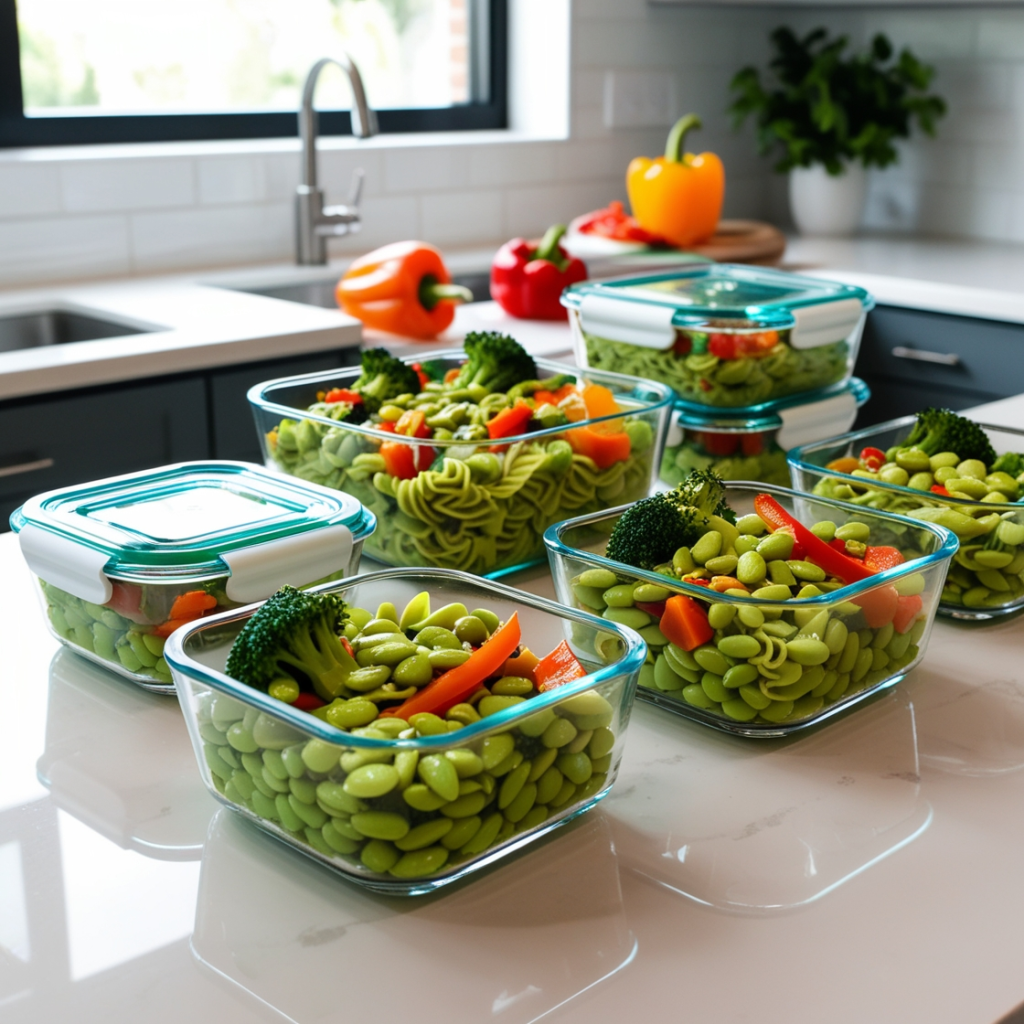
The protein density makes it excellent for post-workout meals when combined with additional vegetables and healthy fats for optimal recovery nutrition. The high satiety factor also makes it valuable for weight management meal plans, helping to control portion sizes and reduce between-meal snacking.
Large-batch cooking on weekends creates convenient grab-and-go meals throughout the week. The pasta holds up well to reheating and maintains good texture when stored properly, making it ideal for meal preparation strategies and busy lifestyle management.
Family-Friendly Preparation
Introducing to families who require strategic preparation techniques that work with rather than against natural preferences. Familiar sauce pairings and favorite vegetables help ease transitions, while starting with dishes where pasta isn’t the sole focus tends to increase acceptance rates.
Presenting to children as “special green pasta” rather than emphasizing health benefits often proves more successful. The vibrant color can actually be an advantage with younger eaters who are drawn to visually interesting foods, making it easier to incorporate into family meal routines.
Quick Start Recipe Collection
Mediterranean Preparation
This simple preparation highlights the pasta’s natural flavors while providing balanced nutrition and familiar Mediterranean tastes that complement the nutty characteristics.
Ingredients:
- 2 oz dry edamame pasta, cooked
- 2 tbsp extra virgin olive oil
- 2 cloves fresh garlic, minced
- 1 cup cherry tomatoes, halved
- 1/4 cup fresh basil leaves
- 1 tbsp fresh lemon juice
Heat olive oil in a large pan and sauté minced garlic for 30 seconds until fragrant. Toss in cooked edamame pasta, cherry tomatoes, basil, and lemon juice, stirring gently for 2-3 minutes until heated through.
Asian-Inspired Bowl
This preparation embraces the pasta’s natural affinity for Asian flavors while creating a complete, satisfying meal with excellent nutritional balance and vibrant colors.
Ingredients:
- 2 oz dry edamame pasta, cooked
- 1 tbsp toasted sesame oil
- 2 tsp rice vinegar
- 1 tbsp low-sodium soy sauce
- 1/2 cup carrots, julienned
- 1/2 cup bell peppers, julienned
- 1 tsp toasted sesame seeds
Whisk together sesame oil, rice vinegar, and soy sauce in a large bowl. Add cooked edamame pasta, julienned vegetables, and sesame seeds, tossing well to coat evenly.
Protein-Rich Primavera
This creates a complete meal with exceptional nutritional density while showcasing the pasta’s versatility with various vegetable combinations.
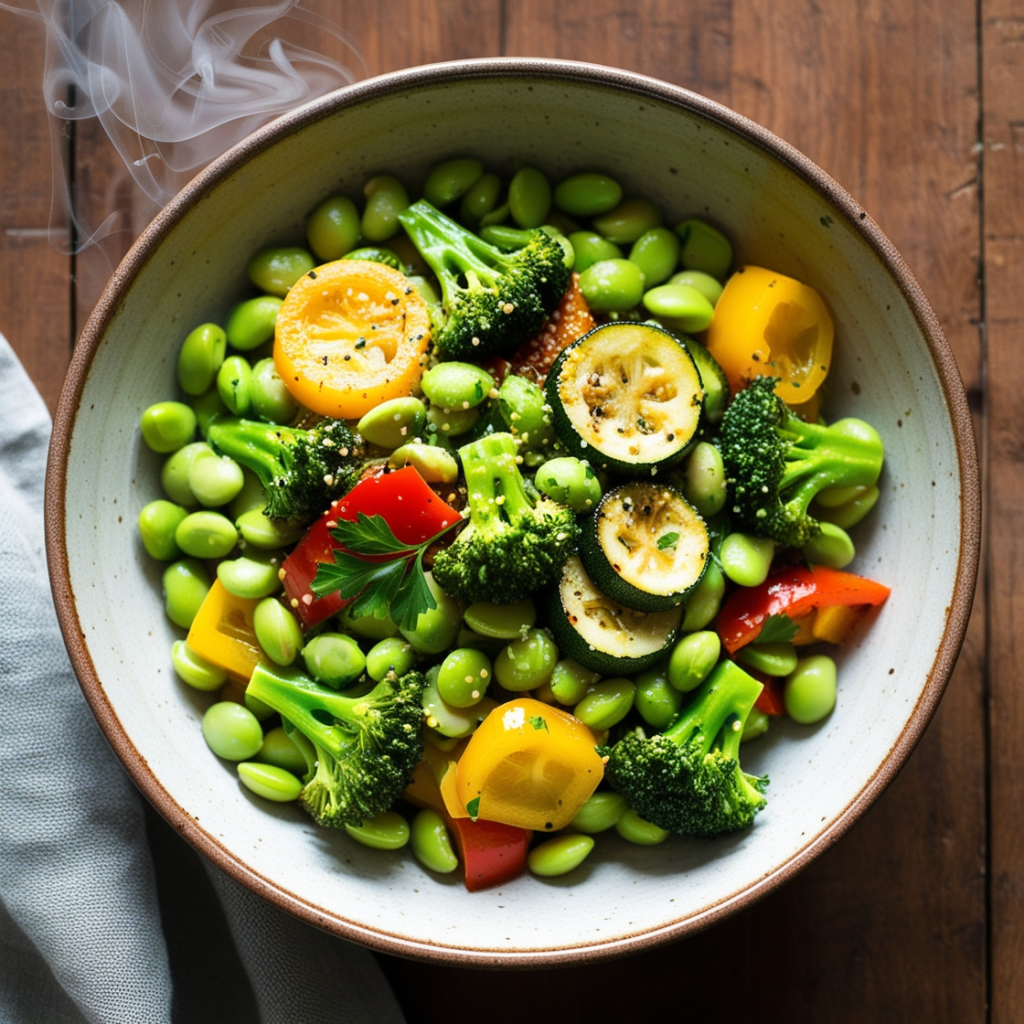
Ingredients:
- 2 oz dry edamame pasta, cooked
- 2 tbsp olive oil
- 1 cup zucchini, sliced
- 1/2 cup bell peppers, chopped
- 1 cup broccoli florets
- 2 tbsp nutritional yeast
- 2 tbsp fresh herbs (parsley or oregano)
Sauté vegetables in olive oil until tender-crisp, then toss with cooked pasta and finish with nutritional yeast and fresh herbs.
Troubleshooting Common Issues
The most frequent cooking error involves overcooking, which results in mushy, unappetizing texture. Test for doneness every 30 seconds after the 5-minute mark, aiming for firm but not crunchy results. Another common mistake involves using identical sauce-to-pasta ratios as with wheat pasta, when this variety requires approximately 25% more sauce due to its denser texture and higher absorption rate.
If pasta turns out too grainy, immediately mix with reserved pasta cooking water to smooth the texture. For dishes that seem too earthy in flavor, balance with acidic elements like lemon juice, apple cider vinegar, or tomatoes. When pasta appears dry, remember that it absorbs sauce more readily than wheat varieties, so have extra sauce prepared and add gradually until desired consistency is achieved.
Different brands exhibit varying characteristics in terms of cooking time, final texture, and flavor intensity. If one brand doesn’t meet preferences, experiment with alternatives rather than abandoning the category entirely. Understanding that each manufacturer may require slight technique adjustments leads to better results and greater satisfaction with the final product.
The Bottom Line
Edamame pasta represents a scientifically-backed, nutritionally superior alternative to traditional wheat pasta that delivers measurable health benefits without sacrificing culinary satisfaction. The combination of complete protein, high fiber content, essential micronutrients, and low glycemic impact creates a nutritional profile that supports cardiovascular health, blood sugar management, weight control, and overall wellness.
When approached with appropriate expectations and preparation techniques, this pasta alternative becomes a valuable tool for diversifying nutrition, increasing protein intake, and exploring new flavors and textures. The environmental sustainability advantages and versatility in meal preparation make it a practical choice for health-conscious consumers seeking to optimize their dietary patterns while maintaining culinary enjoyment.
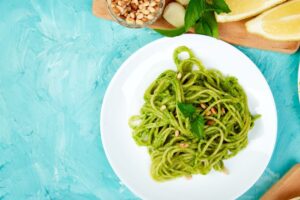
*We may earn a commission for purchases made using our links. Please see our disclosure to learn more.

